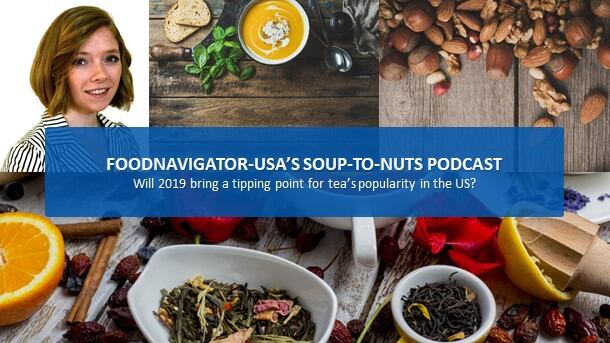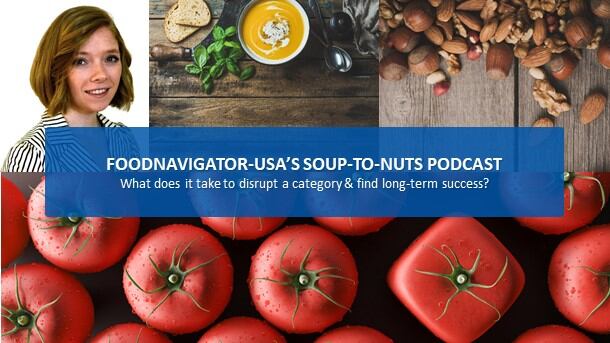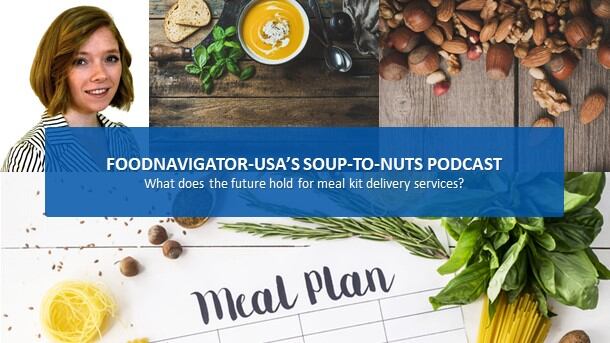In recent years, the financial picture for tea has been mixed, with retail dollar sales climbing but unit sales and volume dropping. According to the Beverage Market Corporation, retail sales of tea in the US market are projected reach $19.6 billion in fiscal year 2018 – up from $19.1 billion the previous year. But at the same time unit sales were projected to fall from 3.68 million gallons in 2017 to 3.66 million gallons in 2018.
There are few ways that this can be interpreted, but the positive twist that many in the segment are banking on is that consumers are now willing to pay more for premium tea and for ready-to-drink tea, which is the only tea category that the Beverage Market Corporation projected to increase in 2018 in both volume and value to reach an estimated $10.75 billion.
The industry’s optimism for tea in 2019 is reinforced by research from the public opinion company YouGov, which found younger consumers are just as likely to reach for tea as they are coffee, which is a shift from older generations. Specifically, it found shoppers under 30 choose tea and coffee each 42% of the time, while Americans older than 65 prefer tea only 21% of the time compared to 70% for coffee.
To help make sense of these trends and better understand where tea is headed, this episode of FoodNavigator-USA’s Soup-To-Nuts podcast features industry veterans and category newcomers who break down what is driving consumer interest in tea, what they are looking for and how companies are evolving their portfolios and marketing strategies to meet shoppers’ demands.
What is driving consumer interest in tea?
Generally speaking, consumer interest in tea is heavily tied to their interest in health and wellness, but increase access to information about the different types of teas and tisans as well as greater availability of the products also is playing a significant role.
Andrew Freeman, a trendologist and the founder of the hospitality focused consultancy af&co, explained how consumers’ focus on health – both physical and mental – is boosting tea.
“This whole idea of drinking tea for your health has really elevated,” in part because of the “volatile world we in live in,” he said, explaining, “tea has a calming principle that I think people really need right now. So, whether it reduces inflammation or calms your nerves down or gives you a little pump up when you are feeling down – tea has a great opportunity.”
As Freeman hinted at, another driving force behind tea’s popularity is the caffeine boost it provides. But as Matt Jimenez, the CEO of industry newcomer Mindfull, explains tea has an edge over other caffeinated beverages, such as coffee, because consumers can more easily control how much caffeine they consume with each cup.
“As good as coffee is, various tea products provide an alternative to the acidity or sometimes the sugar bombs that can come with our fancy coffees, and they are just lighter in general,” he said. Plus, “there is a lot of versatility within tea. Of course you can go black, you can go green, red, white,” and depending on which one is selected consumers can moderate their caffeine intake.
He explained that tea’s versatility is one of the main reasons that he is preparing to launch two new ready-to-drink versions of the beverage. The first is a line of ready-to-drink green teas under the yoga-focused brand GAIAM, and the second is a line of ready-to-drink black teas under the brand Vibe.
Both are hitting store shelves in February, and as Jimenez explains each offers something unique to the category. The line of flavored green tea from GAIAM offers athletes and fitness-focused consumers a functional alternative to other electrolyte beverages, and Vibe offers more conventional consumers a better-for-you twist on traditional sweet black tea.
Another contributing factor to the rising popularity of tea, according to Smith Teamaker’s new VP of Tea Operations Ravi Kroesen, is increased access to a wider variety of products – a path that he says was first paved in large part by ready-to-drink options.
“Things that have built the ground work [include brands], like Arizona or Snapple – those brands have been in the perception and people’s minds for many years, and I think certainly have helped build us to where we are today in the same way that Starbucks helped build the third wave coffee market,” he explained.
Kroesen explained that Smith Teamaker, which sells loose and bagged tea, is building on this nascent knowledge by providing additional education to consumers about where tea comes from how to brew the perfect cup at home.
“There are many people who still don’t undersetand that tea all comes from the same plant. So there is a lot of room for education, just even at the basic level, and that does include things like brewing and water temperature … and steep time,” which Smith Teamaker tries to provide through clear packaging and in-store classes, Kroesen said.
Also on each package of Smith Teamaker’s teas is a batch number that consumers can use to look up more information about product and each of the ingredients, including where they came from.
Each of these strategies should also help reinforce consumers’ shifting preference to more premium options, like those sold by Smith Teamaker, and their willingness to pay premium prices.
What are consumers looking for?
As consumers learn more about tea and tisanes the varieties that they are purchasing are evolving – no longer limited to basic black and green and sweet or unsweetened.
According to Kroesen, so called herbal teas, or tisanes, in particular are gaining traction. As are single estate origin options.
According to Jimenez, a trend to watch in the ready-to-drink segment is sweet tea made with less sugar, but which still offers the full flavor and taste experience that many consumers – especially in the South – expect from the beverage.
He explains that this was the unique niche he hopes to fill with Vibe, which is black tea sweetened not with sugar but with erythritol and stevia.
In food service, Freeman explains the emerging trends in tea are a bit more cutting-edge. For example, he predicts that 2019 will see a rise in cheese tea, which is tea topped with a cheese foam to create a creamy experience that also is very Instagrammable. He also says more restaurants and hotels are using tea as a base for alcoholic cocktails as well as combining it with seltzer for a nonalcoholic option.
Emerging marketing opportunities and strategies to standout from the competition
As consumer interest in tea heats up, so is the competition – forcing brands to look for new ways to stand out from the crowd.
Freeman suggests that emerging retail opportunities within the hospitality industry is one way for brands to set their products apart.
“To cut through the clutter you have to introduce something that is very signature and unique and have a great sales team to get to the right people who are making those decisions,” and one way to do that is through unique presentations to buyers – such as a virtual tea service over skype or in person, he suggested.
Another option is to work with restaurants and hotels to offer branded products through their venues, Freeman said. He noted that some restaurants now offer consumers the chance to buy product from menus that they can enjoy at their table or at home. Similarly, some hotels have retail stores where guests can buy products that they sampled in their room or associated café.
In the more traditional retail environment, Kroesen says suggests that tea brands need to catch consumers’ eyes before they can earn their loyalty. And the way to do that is through more traditional tactics such as demoing and end cap displays. He says brands can negotiate for better positioning with retailers by showing them how they are bringing new consumers to the aisle.
In the end, there are a lot of opportunities for tea makers, but also significant challenges – some of which they will need to work together to address and some of which will require a more internal, competitive focus, in order to maximize the full potential of the category.




